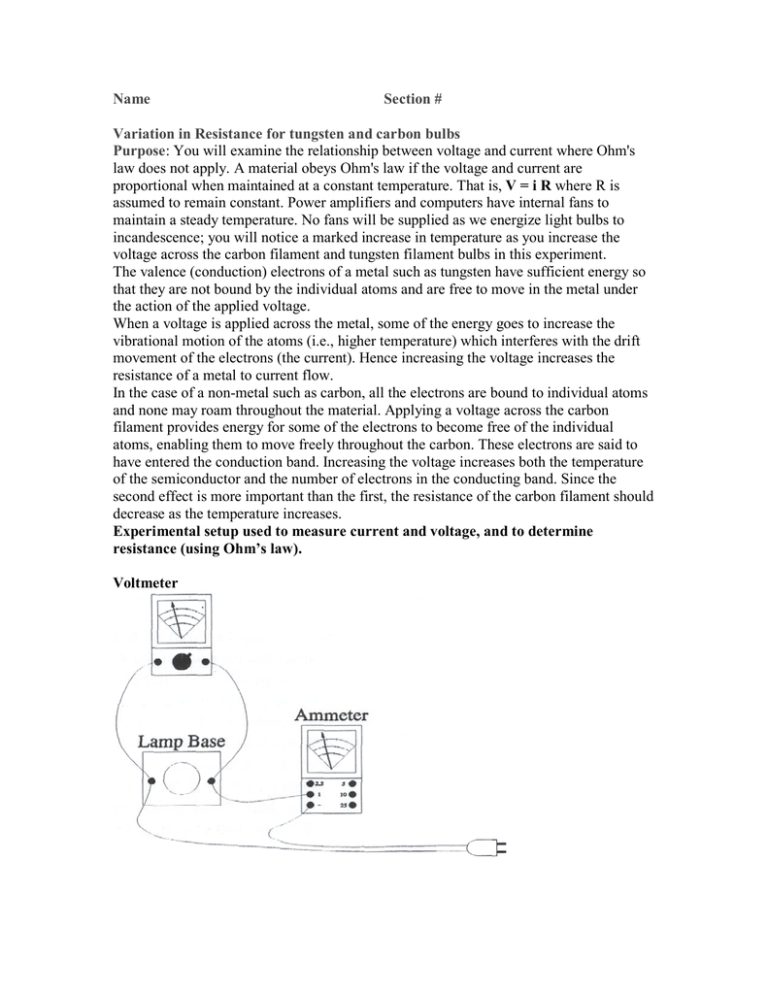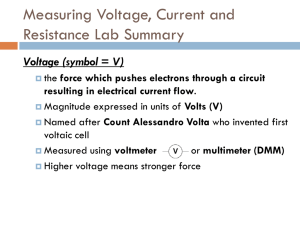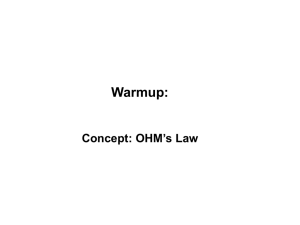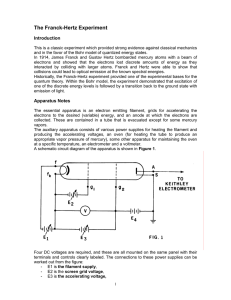Name Section # Variation in Resistance for tungsten and carbon
advertisement

Name Section # Variation in Resistance for tungsten and carbon bulbs Purpose: You will examine the relationship between voltage and current where Ohm's law does not apply. A material obeys Ohm's law if the voltage and current are proportional when maintained at a constant temperature. That is, V = i R where R is assumed to remain constant. Power amplifiers and computers have internal fans to maintain a steady temperature. No fans will be supplied as we energize light bulbs to incandescence; you will notice a marked increase in temperature as you increase the voltage across the carbon filament and tungsten filament bulbs in this experiment. The valence (conduction) electrons of a metal such as tungsten have sufficient energy so that they are not bound by the individual atoms and are free to move in the metal under the action of the applied voltage. When a voltage is applied across the metal, some of the energy goes to increase the vibrational motion of the atoms (i.e., higher temperature) which interferes with the drift movement of the electrons (the current). Hence increasing the voltage increases the resistance of a metal to current flow. In the case of a non-metal such as carbon, all the electrons are bound to individual atoms and none may roam throughout the material. Applying a voltage across the carbon filament provides energy for some of the electrons to become free of the individual atoms, enabling them to move freely throughout the carbon. These electrons are said to have entered the conduction band. Increasing the voltage increases both the temperature of the semiconductor and the number of electrons in the conducting band. Since the second effect is more important than the first, the resistance of the carbon filament should decrease as the temperature increases. Experimental setup used to measure current and voltage, and to determine resistance (using Ohm’s law). Voltmeter






